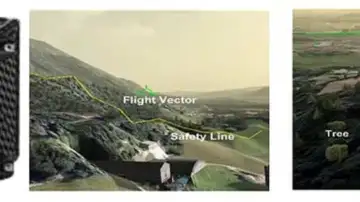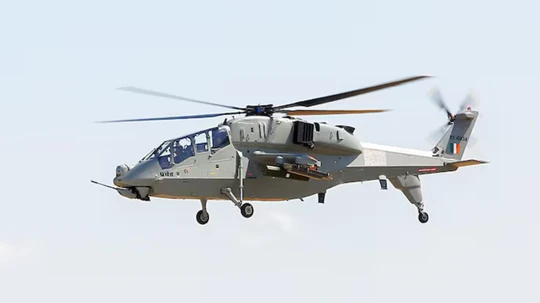Hindustan Aeronautics Limited (HAL) on Wednesday announced one of the most significant defence-industrial collaborations between state-backed Indian and German defence majors in nearly 30 years at the Dubai Airshow 2025. The Indian DPSU and sensor-technology firm HENSOLDT, in which the German government holds a 25.1% stake, have unveiled a co-development agreement for a next-generation Obstacle Avoidance System (OAS) for India’s military choppers.
Officials confirmed that the co-development model will involve shared design and manufacturing IPRs, planned technology transfer, and end-to-end production in India.
OAS and its significance
India’s helicopters routinely conduct demanding missions where terrain complexity and weather are constant challenges. Among the most persistent risks in such environments are power lines, cables, towers and thin wires that disappear in darkness, fog, dust, or brownout.
OAS fills a key operational gap by relying on fibre-scanner-based LiDAR instead of radar, scanning the flight path with high-precision laser mapping to detect hazards earlier and with far greater reliability.
It offers a detection probability of at least 99.5 per cent within the first second, giving crews critical reaction time in the most difficult conditions.
A milestone in India-Germany defence cooperation
Instead of integrating a pre-packaged foreign avionics module, the companies will jointly refine technical parameters of the OAS to reflect India’s mission environments from narrow Himalayan valleys and high-altitude ridgelines to dusty deserts, coastal sectors, and dense forests where helicopter crews routinely face poor visibility and thin visual cues.
The agreement is being interpreted as a strategic reset in India-Germany defence ties, which had seen limited industrial movement since earlier joint efforts on the Dornier aircraft and HDW submarine programmes. The new initiative is in alignment with India’s own Atmanirbhar Bharat push and with Germany’s “Zeitenwende” framework and Indo-Pacific engagement priorities.
Zeitenwende means a “historic turning point”. The term was popularised by former Chancellor Olaf Scholz’s in a 2022 speech to the Bundestag. In this address, Scholz announced a fundamental shift with a renewed focus on defence.
Production in India, export rights with HAL
Under the proposed agreement, HAL will manufacture, integrate, supply and sustain the OAS in India, supported by technology transfer and shared IPR arrangements. Crucially, HAL will also have the rights to export the OAS-equipped solution globally: a major addition to India’s expanding defence aviation portfolio.
Export rights are expected to play a pivotal role. Several countries, including Argentina, Mauritius, Nepal and the Philippines, have already evaluated HAL helicopter platforms. An OAS-fitted LCH or ALH, for instance, strengthens HAL’s competitive position in regions where mountainous terrain, coastal winds or visibility issues complicate operations.
Industry officials said HENSOLDT benefits directly from this export structure, as widespread adoption of the co-developed OAS would expand the company’s global installed base while supporting Germany’s objective of building Indo-Pacific industrial partnerships.

Integration on Indigenous Choppers
As per the development plan, indigenous choppers developed by HAL will be the first platforms to receive the OAS. Its deployment in Ladakh and other high-altitude theatres makes it a natural choice for initial integration. The system will then be adapted by other platforms across the Indian Army, the Air Force, and the Navy.
HAL’s Korwa division in Uttar Pradesh is expected to anchor long-term production, aligning with the state’s Defence Corridor plan and further broadening India’s helicopter-related avionics ecosystem.
